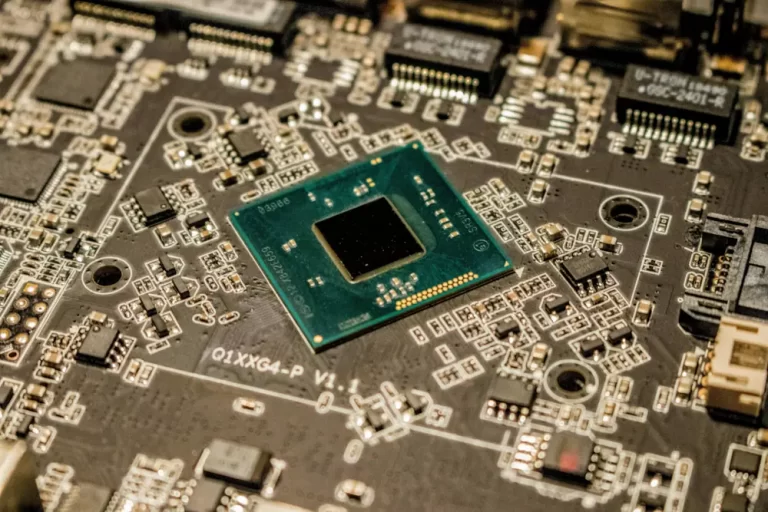AI and its Potential Impact on the Environment
The impact of Artificial Intelligence (AI) on the environment is varied, with both positive and negative impacts possible. Here we’ve summarised the key impacts you need to know.
We’ll also explain some of the emerging strategies that will help lessen the negative impacts of AI as its influence continues to grow.
Positive AI Impacts on Environment
1. Efficiency and Resource Optimisation

AI has the potential to enhance efficiency in various industries. For example, in agriculture, AI-driven farming can optimise irrigation, pesticide use, and crop yields, monitoring patterns to improve use of these resources.
This in turn allows the burden placed on the environment to be lessened, reducing excess water use and reducing risk of pesticides impacting neighbouring wild areas.
2. Renewable Energy Optimization

Modern energy grids are incredibly complex and include a growing range of contributors. AI technologies can help to optimise these grids, blending management of generation, distribution, and consumption to maximise efficiency and renewable energy use.
3. Environmental Monitoring

AI is increasingly instrumental in environmental monitoring and management. It enables the analysis of large datasets to track climate change, deforestation, air and water quality, and biodiversity, spotting emerging patterns that could otherwise be missed.
This data-driven approach aids in making informed decisions for environmental conservation.
4. Conservation and Wildlife Protection

Similarly to environmental monitoring, AI is being used in conservation efforts to monitor and protect wildlife. For example, AI-powered camera traps can identify and track endangered species, helping conservationists gather valuable data for wildlife preservation.
This growing use could give us new insights into the lives of species that have previously proven challenging to monitor.
5. Waste Management

AI applications can improve waste management processes. Human activities produce an array of different waste types, often recyclable, but mixed together.
Smart waste sorting systems, guided by AI, will enhance recycling efficiency and reduce the environmental impact of improper waste disposal.
Negative AI Impacts on Environment
1. Energy Consumption

Training sophisticated AI models, especially large networks, requires significant computational power and energy. Consequently, the carbon footprint associated with data centres, and high-energy AI computations is growing rapidly.
This in turn can increase emissions and contribute to climate change, if renewable energy is not being used.
2. E-Waste

The rapid evolution of AI technology may lead to a faster turnover of hardware, contributing to electronic waste. Proper disposal and recycling methods are crucial to mitigate the environmental impact discarded AI hardware can have.
AI itself can help with the methods needed, but the pace of adopting the waste management needed must progress quickly.
3. Algorithmic Bias and Unintended Consequences

AI systems work by consuming and analysing large data sets. Therefore, any biases in the data will show through with the AI output. This factor has prompted strong concerns that AI systems may perpetuate and amplify societal biases.
This has the potential to show through in a range of societal features, including our approach to sustainability and tendency to under prioritise environmental concerns such as climate change.
4. Resource Extraction for AI Hardware

The manufacturing of AI hardware components requires raw materials, including rare earth metals.
Extraction and processing of such resources is already a contributor to environmental degradation and has the potential to worsen as demand grows, if not managed responsibly.
5. Job Displacement and Social Inequity

The automation facilitated by AI has the potential to displace jobs in certain industries, leading to social and economic challenges.
Displaced workers may face difficulties adapting to new employment opportunities, creating social inequality and potentially straining social support systems.
Avoiding Negative AI Impacts
The potential negative impacts of AI on the environment, and sustainability more generally, are concerning. But these impact need not be the outcome.
There are approaches and strategies that can be taken to limit, or even prevent harm. Below we’ve summarised 5 important action areas being pursued.

1. Pursuing Green AI
Pursuing Green AI means focusing on development of energy-efficient AI algorithms and hardware. If these considerations can be prioritised then the potential carbon footprint of AI use is minimised.
For the AI providers, this also enables them to minimise there operational energy costs over the long term.
2. Ethical AI Development
Adhering to ethical AI practices is essential if we are to help mitigate negative social and environmental impacts. Doing so includes avoiding biased training data and ensuring transparency in AI decision-making.
This consideration is highly topical and a regular issue raised with leading AI systems such as Opem-AI’s Chat-GPT and Google’s Gemini.
3. Regulations and Standards
Implementing regulations for the responsible development and use of AI will help address environmental concerns. This includes guidelines for energy efficiency and proper disposal of AI hardware.
The drive towards implementing international AI standards is growing, with examples including the UK’s adoption of a Framework for AI Regulation and the EU’s landmark AI Act.

4. Circular Economy for AI Hardware
Adopting a circular economy approach for AI hardware involves designing hardware for longevity, repairability, and recyclability. This approach minimizes waste and encourages the reuse of components.
Adopting this approach is broadly linked to a wider drive internationally to adopt circular economy practices for all resource use where possible.
5. Investment in Sustainable Technologies
Supporting research and development of sustainable AI technologies and applications can contribute to minimizing the negative environmental impacts associated with AI.
Furthermore, this extends to investing in the technologies AI relies upon, such as energy production. Continued advancement of green energy sources, such as wind power, is key to ensure AI can eventually operate free of carbon emissions and become net zero.

Looking to the Future
While AI offers significant potential for positive environmental contributions, careful consideration of its potential negative impacts is crucial.
By integrating sustainability principles into AI development, addressing energy consumption challenges, and promoting ethical practices, the environmental footprint of AI can be mitigated.
If this can be achieved, then AI’s potential for positive contributions to the environment could be remarkable.






